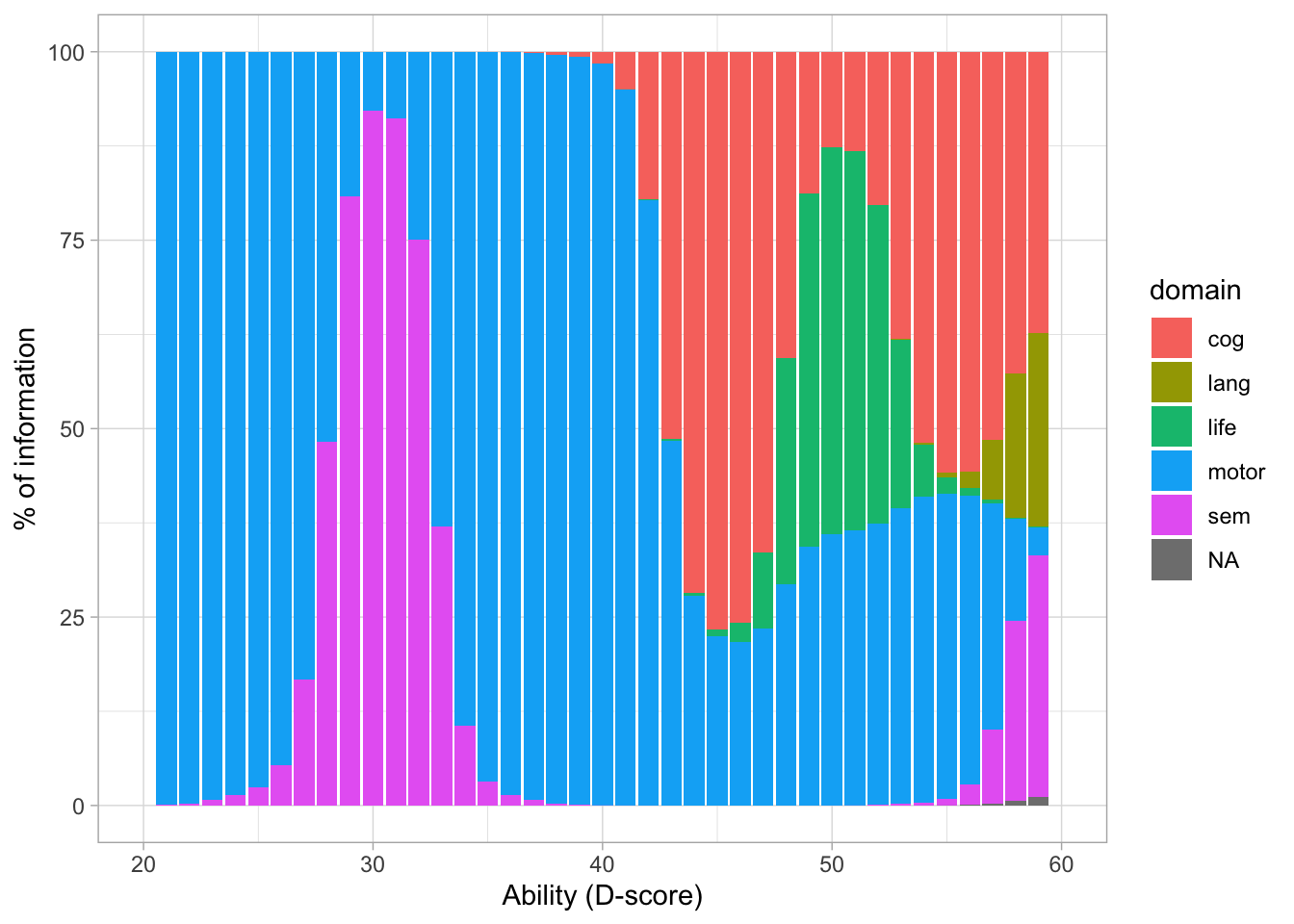5.4 Content balancing
To select items for an instrument, the first step is to make sure that the items are distributed evenly over the \(D\)-score scale (see chapter @(ch:information)). The items that have difficulty estimates from a Rasch model, all load to the construct and are therefore all assumed to measure child development well. The Rasch model is a one dimensional model, and this model is well suited for developmental data (see Booklet I: chapter 4 for the rationale behind the choice for the Rasch model to model child development). Nevertheless, child development is studied to occur on multiple domains: motor development; language development; cognitive development etc. Having this content validity reflected in the \(D\)-score measure is important. In Booklet II: 6.3 Domain coverage and scores we show the extent to which the different developmental domains are covered in the \(D\)-score.
In constructing a new instrument to measure the \(D\)-score, the domain coverage may also be important. So to make sure that the new instrument has a good content validity, select items in such a way that all domains are represented. The domain representation by the selected items can be checked by plotting the item information by \(D\)-score for the selected items, and color the item information for the different domains. This will show to what extend, all domains are covered by the current selection of items.
| item | label | domain |
|---|---|---|
| ddigmd057 | Lifts head to 45 degrees on prone position | motor |
| mdtgmd002 | Prone (on tummy), can lift head up to 90 degrees | motor |
| iyosec001 | Does your child stop crying or calm down when you come to the room after being out of sight, or when you pick him or her up? | sem |
| by1mdd054 | picks up cube (check hand preference) | motor |
| mdtgmd010 | Sits by self well | motor |
| gricgd022 | Finds toy under cup | cog |
| sgrred035 | Uses spoon | life |
| by3cgd051 | Blue Board Series: 1 piece | cog |
| by3cgd059 | Attends to story | cog |
| mulcgd200 | Matches by shape | cog |
